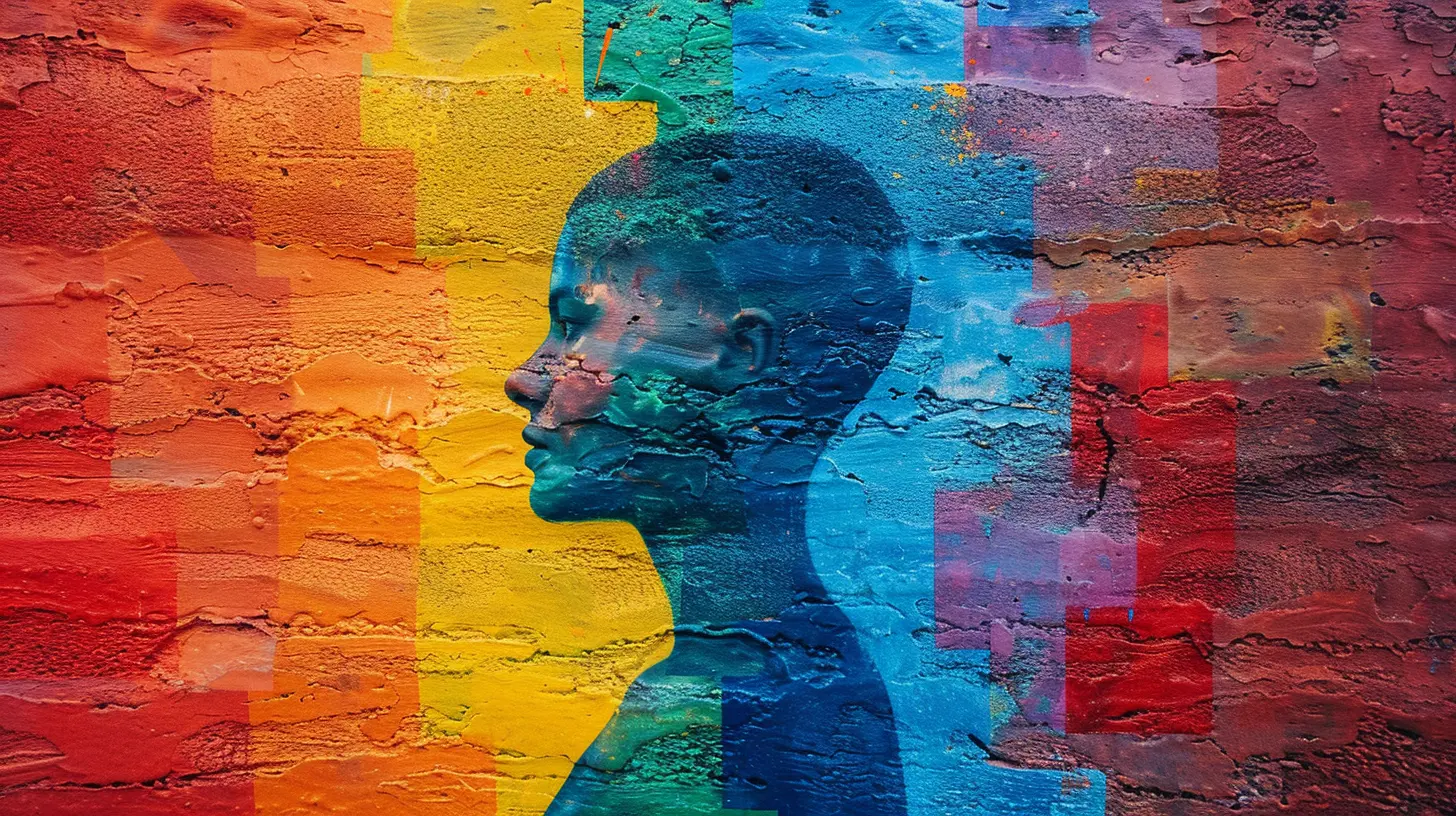Supporting LGBTQ+ Teens: Addressing Mental Health Challenges
21 August 2025
Let’s be real for a second—being a teenager is tough enough. Between high school drama, acne that shows up right before yearbook photos, and trying to figure out who you are... it’s basically a rollercoaster ride through a funhouse of emotions. Now, imagine having to go through all of that while also figuring out your sexual orientation or gender identity in a world that isn't always welcoming.
Yep—supporting LGBTQ+ teens is not just important, it’s essential. These young folks are navigating a path with more potholes than most, and when it comes to mental health, the stakes are sky-high. But hey, the good news is: we can make a huge difference. So, grab your favorite hoodie, a strong cup of coffee (or tea—we don't judge), and let's dive into how we can support LGBTQ+ teens through their mental health journeys in a kind, informed, and maybe even slightly witty way.
Why Mental Health Is a Big Deal for LGBTQ+ Teens
Alright, let’s start by unpacking the big, sparkly elephant in the room: Why are LGBTQ+ teens more at risk when it comes to mental health?Well, in short—they deal with a lot more than their cisgender, heterosexual peers. We're talking bullying, discrimination, fear of rejection, internalized shame, and sometimes even violence. Combine that with the typical teenage whirlwind of hormones and identity-searching, and you've got yourself a perfect storm.
Some stats to chew on:
- LGBTQ+ youth are over four times more likely to attempt suicide than their peers.
- Nearly 60% of LGBTQ+ teens report feeling persistently sad or hopeless.
- Transgender youth face even higher rates of depression, anxiety, and self-harm.
These numbers aren't here to scare you (okay, maybe a little), but more so to stress how critical our support is—because the right kind of support can truly be life-saving.
The Daily Struggles They Don’t Always Talk About
Let’s zoom into a day in the life of an LGBTQ+ teen. Beyond the mental math of calculus and dodging lunchroom gossip, these teens may also be grappling with some of the following:1. Fear of Rejection
Think about it—what if simply being yourself meant risking the love and support of your family and friends? That’s the daily reality for many LGBTQ+ teens. They're constantly wrestling with the question, “Will they still love me if they knew?”2. Identity Confusion
Teen years are basically one long episode of “Who Am I?” Now add layers like coming out, questioning gender, or navigating pronouns. It’s not just confusing—it can be overwhelming.3. Bullying and Harassment
School hallways can be brutal battlegrounds, especially for LGBTQ+ teens. Whether it's being misgendered, hearing slurs, or being outright bullied—this stuff chips away at self-esteem like a woodpecker on a mission.4. Lack of Representation
Let’s face it: despite some progress, many teens still don’t see themselves reflected in positive, empowering ways in media, school curriculums, or even in adult role models around them. Visibility matters. And when it’s lacking, so is validation.
What Can We Actually Do? (Spoiler: A Lot)
Okay, now that we’ve covered the heavy stuff, let’s talk action. How can we—as parents, teachers, friends, and concerned humans—actually support LGBTQ+ teens and help them thrive mentally and emotionally?1. Validate Their Identity (Seriously, Every Time)
You know that warm, fuzzy feeling when you’re finally seen for who you are? That’s what LGBTQ+ teens need, and it starts with validation.Use their chosen name and pronouns. Respect how they identify, even if you're still learning what it all means. You don’t have to be a walking dictionary of gender terms—you just have to be willing to listen and learn.
It might not seem like a big deal to you, but it could be the moment they remember for the rest of their lives.
2. Create Safe Spaces
This goes beyond putting a rainbow sticker on your laptop (though, hey, kudos if you have one). Creating safe spaces means fostering environments—at school, home, or in social settings—where LGBTQ+ teens feel protected, respected, and valued.That may look like:
- Zero-tolerance policies for bullying
- Inclusive language in classrooms
- Supportive counselors and resources
- Not making a big deal out of “coming out”
Sometimes “safe space” is just a code for “a place I know I won’t be judged.”
3. Talk About Mental Health Openly
If mental health was a person, it’d be that one friend no one wants to invite to dinner parties. But guess what? It needs to be there anyway!Normalize conversations around therapy, anxiety, depression, and stress. Make it clear that struggling isn’t a sign of weakness, it’s just a part of being human. And remind them there’s absolutely no shame in asking for help.
Bonus points if YOU share your own mental health stories. Vulnerability is contagious. In a good way.
4. Connect Them with LGBTQ+-Friendly Resources
The internet is a magical place (minus the trolls)—and it’s filled with communities, hotlines, books, and podcasts that can make a real difference.Help your teen:
- Find LGBTQ+ support groups (in real life or online)
- Contact organizations like The Trevor Project, GLSEN, or PFLAG
- Follow uplifting social media accounts with positive representation
Pro tip: Don’t force it. Just let them know these things are out there when they’re ready.
5. Be Their Loudest Cheerleader
Teens might not always say it, but your support means the world. Whether it’s attending a Pride event, shutting down a homophobic joke at the dinner table, or just giving a reassuring hug at the end of a rough day—your actions speak louder than any Instagram post.
The Role of Therapy (No, It's Not Just for “Crisis Mode”)
Therapy isn't just for when things hit rock bottom. In fact, finding a therapist who understands LGBTQ+ identities can help your teen build resilience, develop a sense of self-worth, and process everything they’re going through.Here’s what to look for in a good LGBTQ+-affirming therapist:
- Someone who understands queer and trans experiences
- A space where your teen feels heard and safe
- A therapist who doesn’t make assumptions or try to “fix” them
And if your teen isn’t into therapy right away? That’s okay. Keep the door open without pushing them through it.
What If You’re the Teen Reading This?
First off—hey there, superstar! You’re doing amazing.If you’re feeling overwhelmed or struggling with who you are, please know: You’re not broken. You’re not wrong. You’re not alone.
What you are is powerful. Whole. Worthy. And very much loved.
Find your people. Whether that’s online friends, a cool aunt, a therapist, or a group at school—build your circle of safety and support. And remember: there’s absolutely nothing wrong with needing help to get through stuff. That’s not weakness—it’s wisdom.
A Quick Note to Parents
If your kid has recently come out to you—or you're sensing it might be coming—take a deep breath. You don’t need all the answers right now. You just need to love your child, listen to them, and be in their corner.Be their superhero, not their skeptic. It’s not about being perfect—it’s about showing up.
Let’s Wrap It Up (With a Rainbow Bow)
Supporting LGBTQ+ teens and addressing their mental health challenges isn’t about grand gestures or memorizing the entire LGBTQIA+ glossary (though we love the effort). It’s about creating a world that feels a little less scary and a lot more loving for these incredible young people.So whether you’re a parent, teacher, friend, or randomly clicked on this article out of curiosity—know that your support can change lives.
Let’s not just “tolerate” who these teens are—let’s celebrate them. Loudly. Proudly. And with open arms.
Because every teen deserves to feel safe, seen, and loved. No exceptions.
all images in this post were generated using AI tools
Category:
Mental Health In AdolescenceAuthor:

Nina Reilly
Discussion
rate this article
1 comments
Jane Spencer
This article highlights the crucial need for understanding and support for LGBTQ+ teens facing mental health challenges. Creating safe spaces and open dialogues can empower these young individuals, fostering resilience and promoting their well-being.
August 30, 2025 at 2:19 PM

Nina Reilly
Thank you for your insightful comment! I completely agree that fostering safe spaces and open dialogues is essential for supporting LGBTQ+ teens and enhancing their mental well-being.


